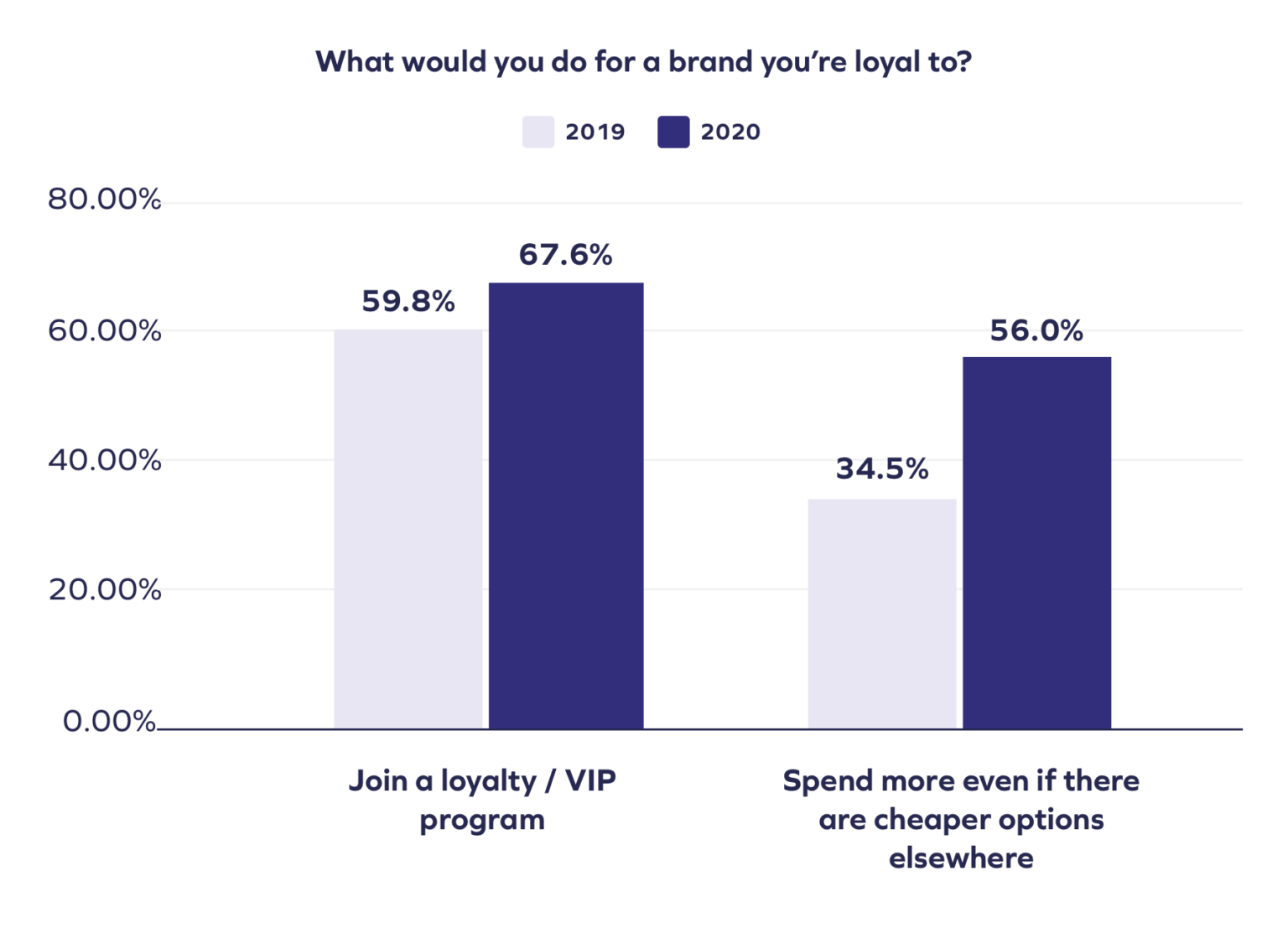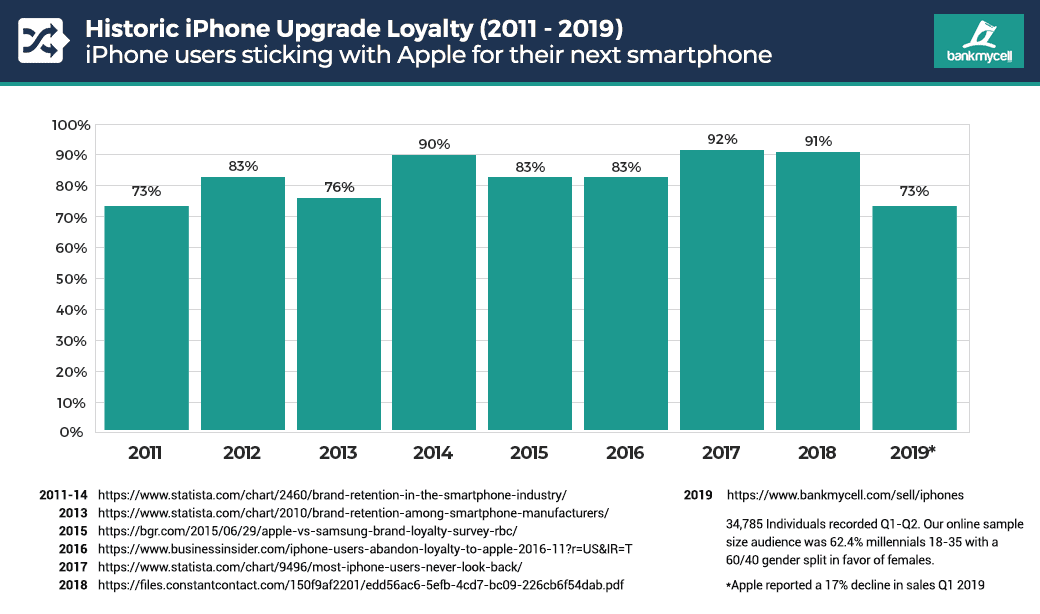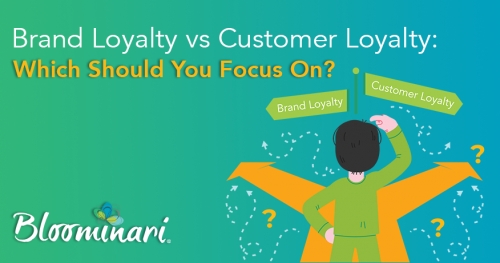Brand Loyalty vs. Customer Loyalty
Brand loyalty is defined as the dedication of a customer to stick to a brand. The concept of brand loyalty stands on the principle that a brand loyal customer will not switch to another brand no matter what the price of their favorite brand is.
They will repeatedly purchase from the same brand due to the association they have with the brand. Such customers are most likely to purchase multiple products from the same brand because they trust it.
The most relevant example of brand loyalty comes from the IT giant Apple Inc. iPhone users have always shown brand loyalty to iPhone. The recent release of the iPhone 12 marked a 92% brand loyal customers.
They did not want to switch to another phone brand because Apple’s iPhone remains their first choice of phone brands.
Customer loyalty, on the other hand, is easily affected by the product’s quality and price.
In brand loyalty, a customer does not care if he is getting what he wants. Instead, he goes for a brand name.
With customer loyalty, that’s not true. Customers buy a product from a certain brand because of the benefits they can get from it. As such, any brand can get loyal customers onboard by offering competitive prices, discounts, and reward programs. Through these strategies, a customer keeps coming back to buy.
Starbucks has a points-based customer loyalty program where the customers gain stars on each purchase of coffee. Through My Starbucks Rewards, the brand not only collects customers’ data but also keeps the customers coming back for repeat purchases.
After all the discussion, a graph shows that customer loyalty wins the race, at least for US consumers.

(Image Source: Yotpo.com)
67.6% of US consumers will opt for a loyalty program, as compared to 56% who will stick to the brand even if there’s a price increase.
Pros
Now that we have established the difference between brand loyalty and customer loyalty, let’s see the advantages of both marketing concepts:
Brand Loyalty
Brand loyalty has numerous advantages, some of which are:
- Brand loyalty creates strong brand recall
- The customers are willing to pay premium prices if they are loyal to a brand.
- It enhances the credibility and positive word of mouth for the brand
- The brand can introduce more products thanks to extensive brand recognition
Customer Loyalty
Just like brand loyalty, customer loyalty also has its advantages, some of which are:
- Customer loyalty fosters repeat purchases
- The cost of acquiring new customers goes down if a brand works for making loyal customers
- Loyal customers can work as brand ambassadors by creating positive word of mouth
Cons
With all the mentioned advantages of both brand loyalty and customer loyalty, both have disadvantages too.
Brand Loyalty
- Brand loyalty costs higher to the customers
- A brand loyal customer is most certainly sacrificing variety due to the psychological attachment with a brand
- A brand loyal customer is always at the risk of discontinuation of the product
- The trust in only one brand usually doesn’t let the brand loyal customer evaluate other products
- The brand loyal customer may be sacrificing convenience only to stick to a particular brand
- From the brand’s perspective, quality remains a constant challenge to meet if the customer base is brand loyal
Customer Loyalty
- It is hard to establish which customers are loyal to the brand
- Loyalty programs reduce a company’s profits
- Not every customer is willing to share data for loyalty programs
- Loyalty programs are almost everywhere; it is hard to maintain a distinct customer loyalty program that works
What the Numbers Say
According to a survey, 36.5% of US consumers are willing to spend more if their favorite brand offers a product. As stated in the brand loyalty example above, Apple remains the epitome of brand loyalty that has grown from 90.5% to 92% from the year 2019 to the year 2021.

(Image Source: bankmycell.com)
The above graph represents the brand loyalty of iPhone users from 2011-2019. The company has successfully kept the customer base loyal to the phone over the years.
Such loyal customers come from market leadership qualities of a brand, such as an edge in innovation, research and development, and continuous product augmentation. While many iPhone critics believe that Apple has not improved their product in the past years, their customers stayed loyal because of their love for the phone brand.
On the other hand, if we talk about customer loyalty, almost 90% of the brands have loyalty programs. The stat indicates saturation of brand loyalty programs, yet some companies believe in incorporating innovation in their loyalty programs.

(Image source: yotpo.com)
When we talk about innovation in loyalty programs, we need to keep the stats shown in the above chart in mind. Customers don’t stick to discounts today. They want to stay informed about the sales, early-bird discounts, and customized offers.
Both concepts of brand loyalty and customer loyalty are integral for customer retention. However, brand loyalty stays a step ahead with the benefits it provides.
How to Maintain Brand Loyalty and Customer Loyalty
For brand loyalty, the brand needs to take extensive measures. Most of the brands with customers loyal beyond repeat purchases have invested extensively in their product development. They are not the price leaders of their product category, but they have exceptional products that keep them hooked.
Another factor in engaging customers to a brand and creating a love bond is to keep them engaged through pin-pointed marketing campaigns that directly hit their soft spots.
Apart from brand loyalty, customer loyalty requires the companies to focus on how much value they can provide to their customers.The value can be provided in the form of discounts (the first step) and give out tailored offers that delight the customers.
Takeaway
Brand loyalty and customer loyalty are two sides of a single coin that is known as customer retention. The primary goal of both the marketing concepts is to keep the customer coming back to purchase without considering other brands.
However, the critical difference between the two concepts is how they work. Brand loyalty works on the product aspect, while customer loyalty caters to value provision that instigates repeat purchases.
Businesses can apply both of these concepts in the real world. However, they should first take the cost and benefits into consideration.



